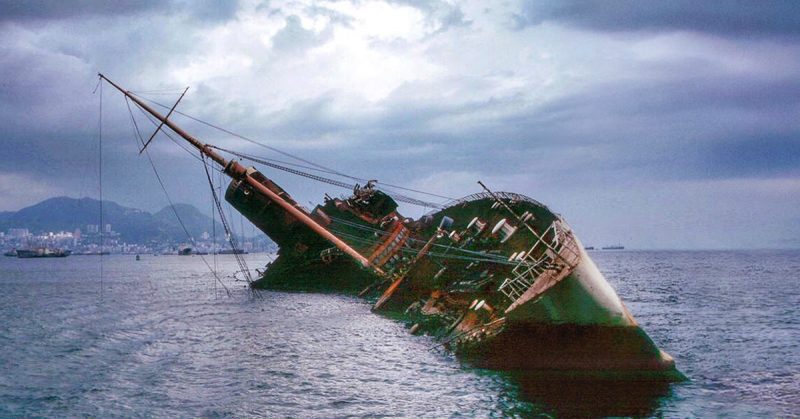RMS Queen Elizabeth was an ocean liner operated by Cunard Line and contracted to carry Royal Mail. She and her sister RMS Queen Mary were the pride of Cunard Line as they easily adapted to the ever-changing shipping market. They endured World War II as warships and lasted until the end of the Age of Ocean Liners, when travel moved from the waters to the air.
After being retired, RMS Queen Mary now rests in a California harbor and serves as a floating hotel. Unfortunately, her sister the Queen Elizabeth suffered a great disaster. She burned in a fire and sank in Hong Kong harbor while undergoing refurbishment. The cause of the fire has never been officially determined.
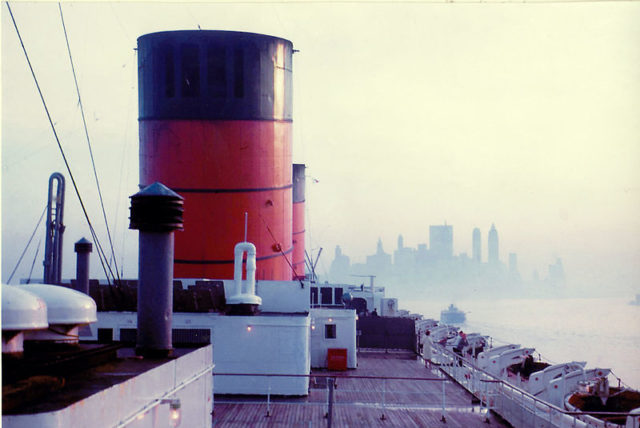
The story of this great ship begins in the 1930s when it was constructed by John Brown & Company in Clydebank, Scotland. At the time of the construction she was known as Hull 552 and later, when work was done, she was one of the most elegant ships and the largest passenger liner ever constructed (1,031 feet long, and 118.5 feet wide), and named in honor of Queen Elizabeth I.
Along with her sister-vessel, she was launched on September 27, 1938, but the outbreak of World War II prevented their maiden voyage as passenger liners until 1946.
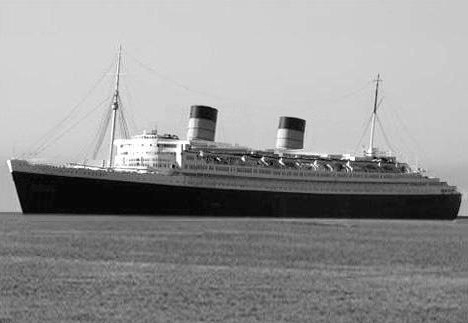
RMS Elizabeth finally set sail on November 13, 1940, when she was requisitioned by the Ministry of Transport. She sailed to Singapore where she got converted into a troopship, outfitted with anti-aircraft guns and enough bunks to carry 5,000 people.
It is said that during the war, RMS Queen Elizabeth carried nearly 1 million soldiers and sailed over 500,000 miles. After the end of World War II, the vessel was brought back to the shipyard to be converted back into a civilian liner and was finally returned to commercial service.
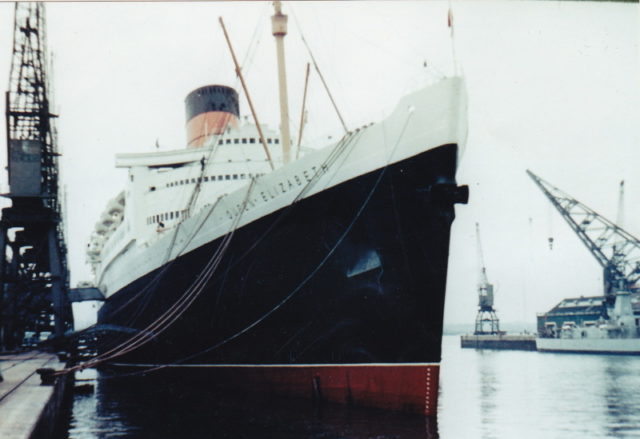
CC BY-SA 4.0
She left on her maiden passenger voyage in October 1946, and in the following 20 years, RMS Queen Elizabeth was one of the dominant transatlantic carriers. However, in the 1960s air travel became rapidly popular, and many ships lost their importance in transport.
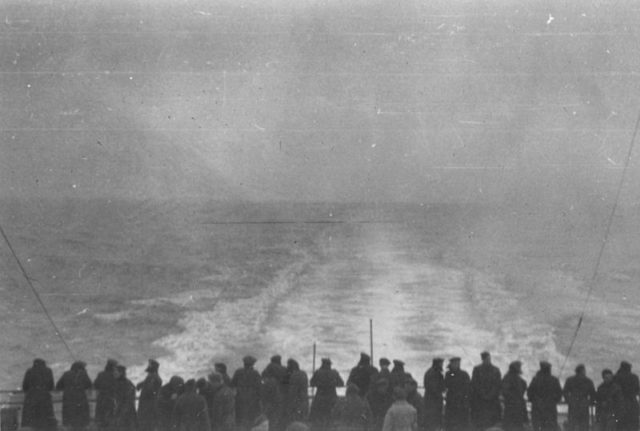
Cunard planned to operate the RMS Queen Elizabeth on Bahaman cruises and in 1965, she underwent a refit suitable for the cruise market. An outdoor swimming pool, lido deck, and an enhanced air conditioning were added. But things didn’t go as expected.
It turned out that RMS Queen Elizabeth was too uneconomical to fuel while her size was too large to use the Panama Canal as well as most of the ports in the region.
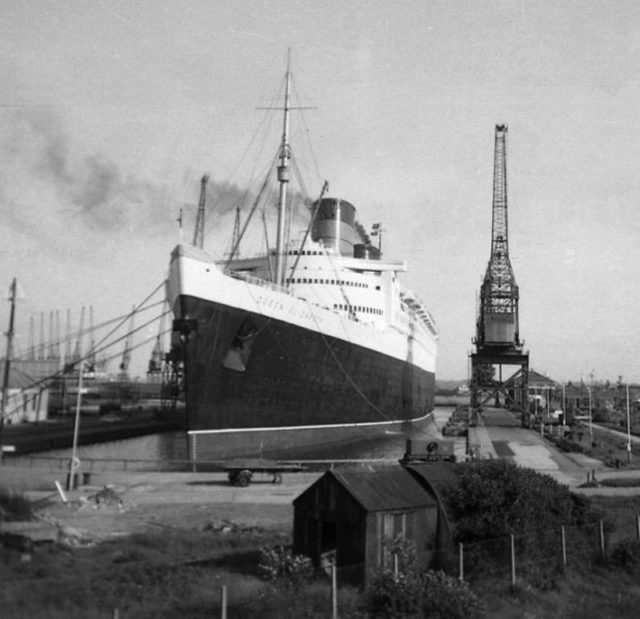
On May 8, 1967, it was announced that both Queens were to be retired, and on November 5, 1968 RMS Queen Elizabeth crossed the Atlantic for the last time before being sold to The Queen Corporation company in Philadelphia.
The new owners turned her into a floating hotel but only after two years, she suffered a fire and the local authorities closed her down.
In 1970, RMS Queen Elizabeth was up for sale again and was sold at an auction to a Hong Kong businessman named Tung Chao Yung, the head of the Orient Overseas Line, who envisioned converting the ship into a floating university.
Tung Chao Yung renamed the ship as Seawise University and she was sent to Hong Kong, where her original interiors were removed and new machinery was added.
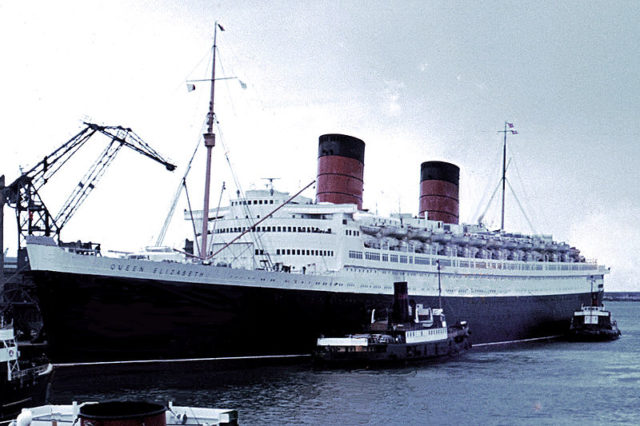
Before being completed, on January 9, 1972, five separate fires broke out. Despite the efforts of the fireboats that worked hard for 24 hours, the fire spread everywhere and it completely destroyed the ship.
The cause of the fires was never explained which left space for rumors. Many believed that the fires were set deliberately as part of an insurance fraud since Tung Chao Yung insured the ship for $8 million, while it cost him only $3.5 million to buy it.
All that was left of the elegant RMS Queen Elizabeth was a half sunken hulk of twisted, melted steel that sat rusting in the harbor until 1990 when it was finally buried in millions of tons of rock and concrete.
Before being buried, the wreck of the ship featured as the MI6 Headquarters in the James Bond film The Man with Golden Gun. The shipwreck of RMS Queen Elizabeth was the largest one until the Costa Concordia disaster in 2012.
